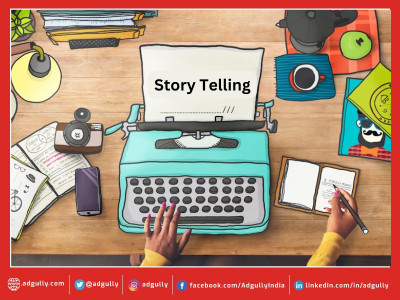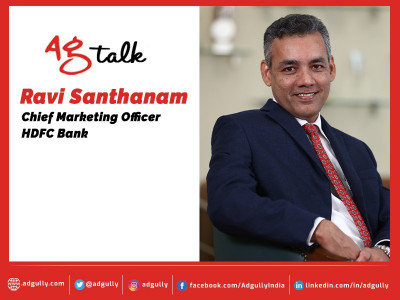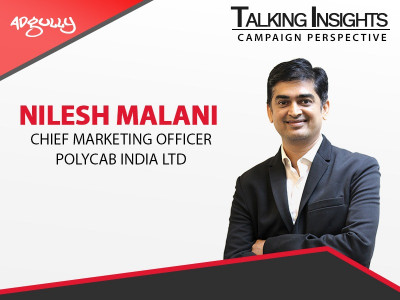PR professionals have now evolved into social community managers: Nayna Banerjee
As part of our latest series on ‘PR Conversation’, we at Adgully are speaking to some of the industry leaders from both PR agencies and the corporate communications world about how PR as a business and communication tool has evolved and grown over the years. In the last 10 years, PR has taken a different dimension, especially after the entry of social media in a big way. While the PR business has grown, some of the challenges that the industry is facing have also multiplied as clients are becoming more demanding and are expecting their consultants to be on their toes to manage their brand reputation, as news today travels fast and clients are expecting quick response and action in case of a crisis situation.
Also read: PR professionals join hands to launch - The PR Club
To get a very honest and candid view on the how the industry is shaping up and what is going to be the long-term strategy, Adgully spoke to Nayna Banerjee, Head of Marketing and Communications, Dun & Bradstreet, India.
How has PR evolved in the last 10 years? Going forward, how will the industry shape up as the dynamics of PR is changing with the acceleration of digital?
In my personal experience, Public Relations (PR) as a profession has undergone a huge transformation in the last 10 years. This has been fueled by the digital revolution. From a channel that relied primarily on traditional media, the profession is now truly standing for “Public Relations”, as the name suggests. The digital evolution in the last 10 years has had a significant impact on messaging, format and measurement processes.
Attracting the Trend Setter: Earned media today is not restricted to the endorsement of journalists or media houses only, but also driven by the end users, the trendsetters, the influencers – each of whom may command a big set of follower base in the social channels.
Listening and Communicating: Communications is no longer a one-way channel, but a two-way conversation where consumers are communicating back with the brand. PR professionals have now evolved into social community managers. Great listening skills, ability to craft the correct response and being always available to respond to an ongoing conversation are now the key requisites for succeeding in this profession.
Content Management: Content will always remain the king. The digital medium allows us to explore many different formats for enhancing the narrative – from restricting the content within 140 characters to video messaging to disappearing messages, you name it. Today, a PR professional is not just crafting messages and arranging access, interviews and photo shoots for news media, they are also charged with developing the storylines with visual and written content necessary to continually feed the digital channels.
I really think content is the game changer now and will be in the near future and PR professionals will play a significant role in that. The industry will demand an excellent understanding of the target audience, relevant digital avenues, especially meant for this audience, along with the ability to drive engagement with the end users through strategic content pieces.
The Pandemic has disrupted everyone. In these times, how have you managed the expectations from your PR agency? Did you redefine your objectives to them and revisited your deliverables?
No one is immune to the effects of the Pandemic and we are no exception. Although this was a challenging situation, what worked for us is our quick response to the changing times.
As an organisation that provides data and insights to drive business decisions, we have worked to help our clients navigate the challenging environment and have developed specific resources and insights in response to COVID-19. We worked with our agency to ensure we promoted these resources in prominent traditional and digital media channels, thus guaranteeing that our clients could easily access them.
The Pandemic has fractured the process of direct media interactions. We have, however, been able to circumvent the problem by investing in new media assets like Podcasts and Webinars and ensured regular flow of insights and commentaries. We brought in industry experts in our webinars to ensure that the media and the audience have a 360-degree view of how different industries are coping with the Pandemic.
We worked on building the outreach program to make the new normal work for us.
Today, artificial intelligence and data analytics are becoming very important in marketing and communication. How are you making use of these to help in your overall messaging and achieving your ROI?
According to the Winterberry Group, 85% of firms struggle to consistently reach and prioritise target audience across media channels. Dun & Bradstreet is helping clients across the world to prioritise audience faster with AI-powered analytics, which are connected to the Dun & Bradstreet Data Cloud for achieving greater precision in targeting.
Our constantly expanding Data Cloud contains comprehensive information on more than 360 million businesses. We use this data extensively in our overall marketing communication efforts. Achieving precision in targeting has helped us to customise our messaging as per industry segmentation and has given us better results.
In my personal opinion, I think AI, along with traditional in-person approach, will make Public Relations an important stakeholder in the overall marketing mix.
PR measurement and effectiveness of PR has always been a subject of debate. As a PR professional, what steps should the PR industry take to bring in uniformity so that everyone speaks one language when it comes to PR measurement?
In business, every effort should bring in results and should be measurable. Setting goals and measuring the result against the goals is the standard protocol for any communication program.
The PR industry has suffered long enough the absence of any standard robust measurement criteria and I would strongly recommend having a standard measurement in place, encompassing share of voice, website referrals, coverage in target publications, impressions in case of digital PR, etc. Using new analytics technology can also help to demonstrate the powerful impact of all PR efforts on business and consumer behaviour.
Getting the right skillset and training has always been a challenge in the PR profession. What is your view on the same and what would be the valuable tips that you would like to give to the budding professionals?
I think the situation is different now than say 10-15 years back. Today, there are many schools where PR is offered as a specialisation at undergraduate and graduate levels and we see a lot of bright people coming into the profession.
If you ask me, I think Public Relations is a well-rounded profession and what we look for is an inquisitive mind with the right attitude for learning. The modern generation is well groomed and most of them are blessed with excellent communications skills. What we additionally need is a creative bent of mind with a solution-oriented approach.
Do you think that the traditional role of interpersonal communication which was so critical to the profession has somehow been put to the back burner because of too much of virtual engagement? How are you experiencing that? Is it bringing down the efficiency and the final output?
Technology has been the biggest enabler during this pandemic. The very fact that we have been able to work from home in the last few months is the greatest example. Technology has helped us to bridge distances, kept us connected and allowed us to collaborate.
However, humans are social beings and relationships cannot be built only through digital means. I do think we need personal interactions to build relations with our stakeholders. Digital interactions carry the risk of becoming too transactional at times.
Your PR partner plays an important role in building your brand reputation and helps you in shaping a positive opinion of the company. How do you measure your agency’s performance and evaluate them every year?
In my opinion, the best marketing communications ideas today are platform agnostic and travel fluidly between owned, earned and paid media, and I think a strong proposition and content can help deliver relevant messaging.
With our agency, we agree to a set of goals at the beginning of the year as well as at the beginning of every quarter and review the performance on a monthly basis. As an in-house marketing communications team, we work on the strategy and the agency helps us with the tactical implementation.




















Share
Facebook
YouTube
Tweet
Twitter
LinkedIn